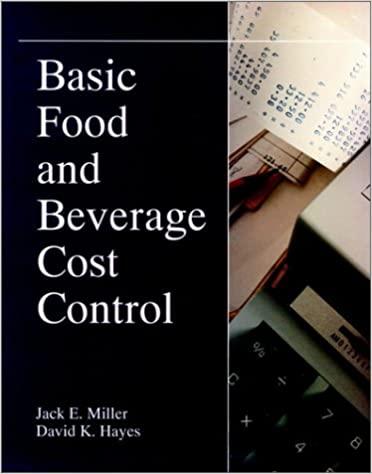






Required information (The following information applies to the questions displayed below.] Craft Pro Machining produces machine tools for the construction industry. The following details about overhead costs were taken from its company records. Indirect Materials Other Overhead Indirect Labor $350,000 $130,000 Production Activity Grinding Polishing Product modification Providing power System calibration 600,000 $ 205,000 420,000 Additional information on the drivers for its production activities follows. Grinding and Polishing Product modification Providing power System calibration 19,000 machine hours 1,600 engineering hours 18,000 direct labor hours 850 batches Number of units Machine hours Job 3175 140 units 400 MH eng 33 hours 25 batches Job 4286 1,750 units 4,000 MH 28 eng. hours 75 batches Engineering hours Batches Number of units Machine hours Engineering hours Batches Direct labor hours Job 3175 140 units 400 MH eng. 33 hours 25 batches 430 DLH Job 4286 1,750 units 4,000 MH 28 eng. hours 75 batches 3,870 DLH Required: 2, 3 & 4. Compute the activity overhead rates using ABC. Combine the grinding and polishing costs into a single cost pool. Determine overhead costs to assign to the above jobs using ABC. What is the overhead cost per unit for Job 3175? What is the overhead cost per unit for Job 4286? (Round your activity rate and average overhead cost per unit to 2 decimal places. Round "overhead assigned" to the nearest whole dollar.) Activity Overhead Cost Activity Drivers Activity Rate Activity driver incurred Overhead assigned Activity d incurre Grinding & Polishing Machine hours Product modification Engineering hrs. Providing power Direct labor hrs. System calibration batches Sara's Salsa Company produces its condiments in two types: Extra Fine for restaurant customers and Family Style for home use. Salsa is prepared in department 1 and packaged in department 2. The activities, overhead costs, and drivers associated with these two manufacturing processes and the company's production support activities follow. Process Department 1 Activity Mixing Cooking Product testing Driver Machine hours Machine hours Batches Quantity 2,500 2,500 500 Department 2 Machine calibration Labeling Defects Overhead cost $ 6,100 10,900 114,100 $ 131, 100 $ 330,000 16,500 9,000 $ 355,500 $ 85,000 43,000 81,000 $ 209,000 Production runs Cases of output Cases of output 600 170,000 170,000 Support Recipe formulation Heat, lights, and water Materials handling Focus groups Machine hours Container types 85 2,500 10 Additional production information about its two product lines follows. Units produced Batches Machine hours Focus groups Container types Production runs Extra Fine 36,000 cases 360 batches 1,050 MH 60 groups 8 containers 270 runs Family Style 134,000 cases 140 batches 1,450 MH 25 groups 2 containers 330 runs 4. Using ABC, compute the total cost per case for each product type if the direct labor and direct materials cost is $8 per case of Extra Fine and $7 per case of Family Style. (Round your intermediate calculations to 2 decimal places. Round "Activity Rate" and "Overhead cost per unit" answers to 2 decimal places.) Extra fine Activity Overhead Cost Activity Drivers Activity Rate Activity Drivers Overhead assigned Mixing & Cooking $ 17,000 2,500 machine hours Product testing 500 batches 114,100 330,000 9.165 600 runs Machine calibration Labeling & Defects Recipe formulation Heat, light and water 85,000 43,000 170,000 cases 85 groups 2,500 machine hours 10 container types Material handling 81,000 Total overhead costs assigned Extra fine Family Style Extra fine Family Style Activity Drivers Activity Rate Activity Drivers Overhead assigned Activity Drivers Overhead assigned 2,500 machine hours 500 batches 600 runs 170,000 cases 85 groups 2,500 machine hours ) 10 container types Total overhead costs assigned Extra fine Family Style Required information (The following information applies to the questions displayed below.] During April, the first production department of a process manufacturing system completed its work on 410,000 units of a product and transferred them to the next department. Of these transferred units, 82,000 were in process in the production department at the beginning of April and 328,000 were started and completed in April. April's beginning inventory units were 70% complete with respect to materials and 30% complete with respect to conversion. At the end of April, 104,000 additional units were in process in the production department and were 85% complete with respect to materials and 35% complete with respect to conversion. Prepare the number of equivalent units with respect to both materials and conversion costs in the production department for April using the FIFO method. Equivalent Units of Production - FIFO Units % Materials EUP-Materials % Conversion EUP-Conversion Units to complete beginning work in process Units started and completed Units in ending work in process Equivalent units of production 0 Required information [The following information applies to the questions displayed below.) Victory Company uses weighted-average process costing to account for its production costs. Conversion cost is added evenly throughout the process. Direct materials are added at the beginning of the first process. During November, the first process transferred 725,000 units of product to the second process. Additional information for the first process follows. At the end of November, work in process inventory consists of 198,000 units that are 40% complete with respect to conversion. Beginning work in process inventory had $239,980 of direct materials and $140,735 of conversion cost. The direct material cost added in November is $1,606,020, and the conversion cost added is $2,673,965. Beginning work in process consisted of 62,000 units that were 100% complete with respect to direct materials and 80% complete with respect to conversion. Of the units completed, 62,000 were from beginning work in process and 663,000 units were started and completed during the period. Required: For the first process: 1. Determine the equivalent units of production with respect to direct materials and conversion. Equivalent Units of Production (EUP)-Weighted Average Method Units % Materials EUP- Materials % Conversion Total units accounted for 100% 239,980 100% Units completed and transferred out 100% 663.000 100% Total units 902,980 EUP-Conversion 140,735 663,000 803,735













